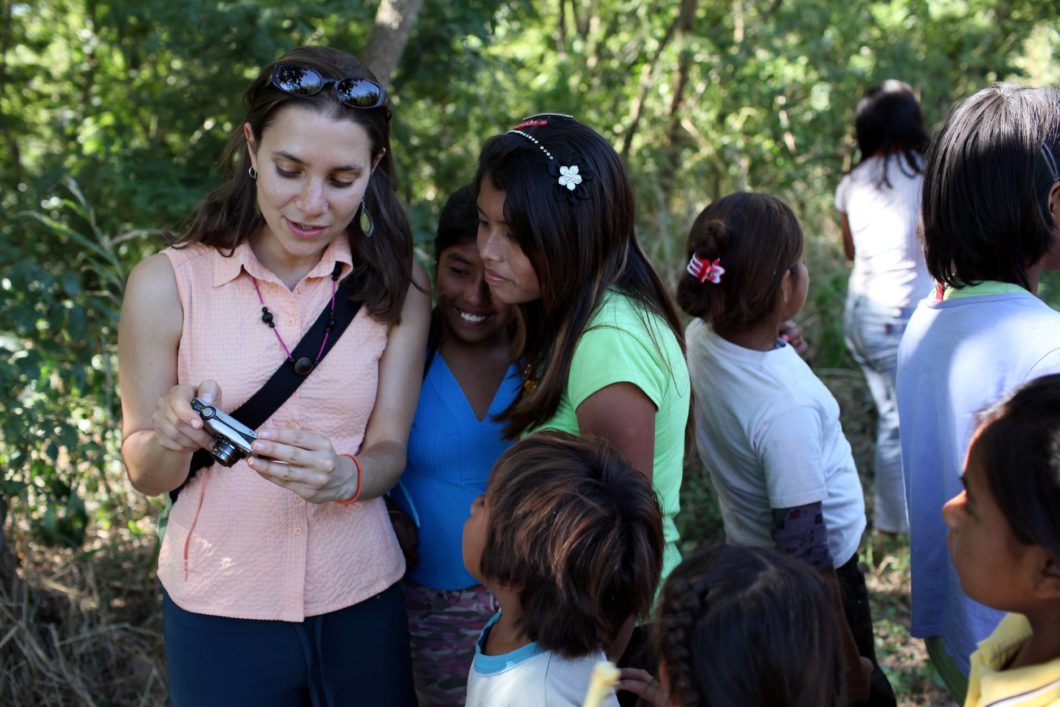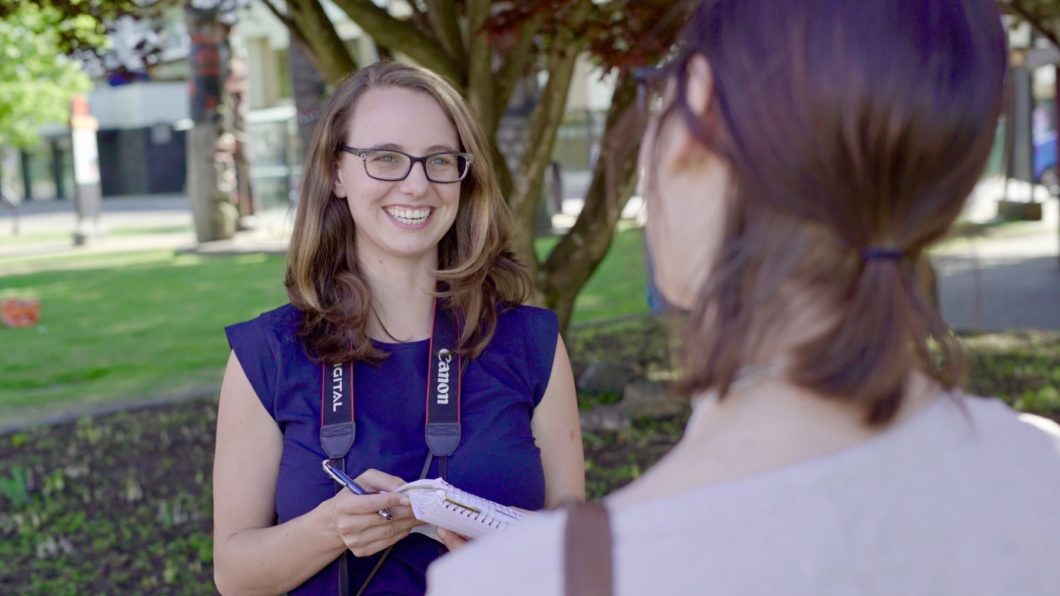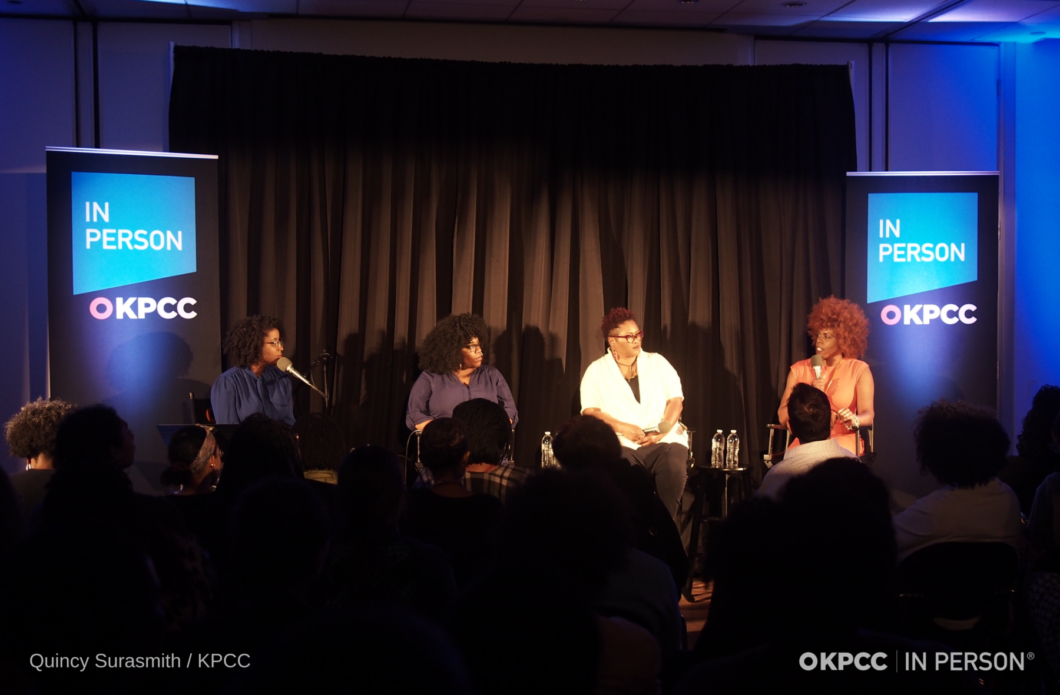
Growing up in a family of newspaper editors and publishers, Jeanne Pinder always knew dinner would be interrupted on Monday and Thursday evenings, when the paper came out.
She and her five siblings would take turns answering the phone as subscribers called to say their Grinnell (Iowa) Herald-Register hadn’t arrived yet. Then, after finishing their meal, the kids would pile into the car with their parents and go deliver papers. “When you work in community journalism, you belong to the community,” Pinder says.
In the 1960s, for Pinder, that meant handing the paper directly to readers and getting their feedback face-to-face.
Over the years, Pinder went from talking to people in person to reading letters to the editor and answering phone calls at the newspaper’s office. With the advent of the Internet, she moved to email and social media.
Today, Pinder runs ClearHealthCosts, a website that crowdsources costs for various medical procedures, aiming to combine the public’s knowledge with journalists’ reporting to bring transparency to the American healthcare industry. The site has been heralded as innovative, but to Pinder, it uses the same journalistic principles she grew up with.
“Me on the street with my notebook is not that different from me at ClearHealthCosts with a Twitter account,” she says. Community engagement is about marrying journalists’ reporting with the public’s knowledge “to make something bigger than either one could produce individually.”
At a time when media organizations are struggling to convince people to pay for their product and most American adults say they’ve lost trust in journalism, many reporters are turning anew to community engagement. They hope connecting with their audience more directly might lead to a greater understanding of one another, the discovery of hidden stories, and ultimately a restoration of trust.
Yet community engagement is no easy task. Many Americans have never spoken to a journalist, a recent Pew study found, especially if they are from communities of color or low-income communities. In such underreported areas, there is often a suspicion of journalists swooping in from the outside and misrepresenting locals.
Some media outlets have hired journalists to address this issue specifically through the role of audience engagement, while others are asking reporters to take on those responsibilities as part of their day-to-day tasks.
I have recently come into my first community-engagement project as a Lenfest Institute fellow at The Philadelphia Inquirer. In December, the other fellows and I launched a project called Made In Philly, a series of solutions-oriented stories profiling diverse millennials from marginalized groups who are making a positive change in their community. We’ve stood on street corners handing out flyers about the project, held pop-up newsrooms in coffee shops to get people’s feedback, and created a text-message line and online form for people to send us story ideas.
While some initiatives have been more successful than others, one of the most important things I’ve learned in the process is that I don’t need to start from scratch. Journalists like Pinder have been engaging their communities in a variety of ways for years, and although every community is different, I can certainly take guidance from the do’s and don’ts they’ve learned along the way.
Do Explain What You Do
A big part of community engagement involves educating the public about journalism. In April 2015, Mike Denison was working on the web and social media team at The Palm Beach (Florida) Post when news broke that Dylann Roof had been arrested for killing nine people at a church in Charleston, South Carolina.
Denison quickly got the story out on social media, but soon realized that post came right after one about a study on high school kids acting up. The juxtaposition seemed insensitive to Denison, so he deleted the post about the study.
Soon people began tweeting at The Palm Beach Post, asking where that post went. Denison explained why he’d removed it and sent them the direct link to the article. “People were so appreciative of that,” says Denison, who is now the audience engagement editor at Science News. “Most people don’t know what exactly it is we do as journalists. They appreciate and trust us more when we take the time to explain.”
Denison is now applying that concept through Science News’ Transparency Project, launched in April. The project involves adding “how we reported” and “about this story” boxes to certain stories, which explain to readers why a story was chosen, what was included or left out, and why certain interviewees were selected. Those stories also include a feedback form that asks readers about the story’s credibility and how the behind-the-scenes information affected its trustworthiness.
In the project’s early months, Denison says readers have responded positively, saying it’s helped them better understand science journalism and communicate the veracity of stories on climate change and vaccinations to those who are skeptical. “The ultimate goal is to prove that we are worthy of readers’ trust,” Denison says.
Transparency can also help establish trust during the reporting process. Bailey Loosemore, a health reporter at The Courier-Journal in Louisville, Kentucky, found that explaining what she was doing and why was crucial in getting people to respond to a Google form she created with a series of questions about food access.
After seeing several grocery stores around the city shut down, Loosemore wanted to know how the closings were affecting food insecurity. She created a Google form with questions about where people got their food, how close the nearest grocery store was, and how much they spent on groceries each month. A short paragraph at the top of the form explained that Loosemore was a journalist reporting on food insecurity and might use the information collected in a story.
“I should have expanded on that,” Loosemore says. One woman Loosemore contacted based on her response to the form thought Loosemore was a spam caller. “I had to say I’m not trying to sell you anything,” Loosemore recalls. “If I did it again, I’d really stress where the information is going, what I’m going to do with it, and why it’s needed.” That includes specifying that she might call people to follow up on their answers, Loosemore says.
Don’t Make Assumptions about Your Audience
Many reporters shy away from engagement because they fear everyone who engages with them—whether it’s on social media, in the comments section of their stories, or by sharing documents and other information—will be trolls, Denison says. “But that’s not true, and if that’s what you assume, you won’t get any valuable feedback.”
Engagement relies on getting to know your audience with an open mind, he says.
That approach has worked well for Pinder. On ClearHealthCosts, all medical billing data that people share is automatically added into the public database, without moderation. When the site launched in 2011, many people thought that was a risky move, Pinder says.
“They said people would scam us—type big prices or type in obscenities,” she says. “But none of that has happened.”
The decision demonstrates trust in her community of readers, Pinder says. If journalists expect people to trust them with sensitive information, they also have to be willing to trust others.
It’s also important to remember that the audience is not a monolith, and different segments will have different needs, says Claire Cameron, engagement editor of the autism research news site Spectrum.
Although she knows autism researchers make up most of Spectrum’s audience, “autism researchers come in all stripes,” she says. Some are studying how individuals react to facial expressions, while others are studying calcium signaling dysfunction at the cellular level. “Just because one person has one set of jargon doesn’t mean others do too.”
That awareness helps Cameron tailor wording in social posts and newsletters to explain the topic enough for someone unfamiliar, without making it redundant for others. “We don’t want to silo readers,” she says. “We want to engage as many as possible.”
Do Feel Free to Ask Anything
After receiving some initial responses to her Google form about food access, Loosemore decided she wanted people to send her a copy of their receipt every time they went grocery shopping. She hoped the extra information could help illustrate what items people are able to buy and potential disparities in food prices by store or neighborhood. “You’re asking a lot of people, at that point,” Loosemore says. But, she realized, these individuals had already engaged with the project and they were free to say no.
It turned out nearly 20 people were interested in participating.
“It was really wonderful to see that people really do want to be helpful and involved in reporting,” Loosemore says. Sometimes all it takes is asking.
The Discourse, a news site with reporters focused on three regional communities across Canada, takes this concept to the next level, building their entire reporting agenda off of questions posed to their readers. Once or twice a year the staff conducts a focus group with a sample of about 20 diverse readers, says Jacqueline Ronson, who covers the Cowichan Valley in British Columbia for the site. Questions range from what people like and dislike about their community to what they want to know more about and what they want others to know about their community.

The team analyzes the responses and surfaces three to five common themes, which are then put to a community vote, Ronson says. “That guides our editorial calendar for many months going forward.”
The process is what led to Ronson’s focus this summer: on environmental change affecting Cowichan’s land and water. “The more you let people into your reporting process, the stronger your output will be,” Ronson says.
Even when the answers to your questions are not what you hope or expect, it can be informative, says Priska Neely, who previously covered early childhood for the southern California public radio station KPCC, and is soon moving into a new role as reporter and producer for Reveal.
When Neely began reporting on racial disparities in infant mortality (black infants are twice as likely to die as white infants), she posted a Twitter thread explaining her goals and inviting people to reach out to her directly with ideas and questions.
Some of the responses asked if she was “only going to be talking about racism and blaming white people,” Neely says, or if she was going to talk about personal responsibility too. “It was really helpful for me to get those things right out of the gate because it helped to frame the series and get ahead of some of those ways of thinking,” she says.
Those early responses also prompted Neely to do a four-minute radio feature explaining how racism—not race—is at play in infant mortality disparities. What she heard from community members at the outset of her reporting also motivated her to write a piece in the series about her own family’s experience with infant mortality, so that people would know that “this is personal.”
About two months later, when Neely published a Twitter thread about her completed project, she received 4,100 likes, 2,700 retweets, and 56 comments—almost none of which brought up the concern of why she was talking about racism and not race.
Don’t Ask without Giving Back
While it’s perfectly reasonable to ask readers to contribute to your project, Pinder says, it’s important to provide value for them too. Before ClearHealthCosts begins crowdsourcing healthcare costs in any community, Pinder and her team first survey providers by phone to collect their cash prices on a range of common procedures. They also populate the site’s database with the Medicare rate for those procedures.
This reporting creates a foundation of information that consumers can access before they submit their own information on what they paid for certain procedures. “It would be a completely different thing if we went on the Internet with no reported prices and said give us your prices,” Pinder says. “Nobody likes that.”
But when people see how much work she and her colleagues have already put into the project, they realize journalists want to work alongside them, she says.
ClearHealthCosts reporters also try to provide tips to help people navigate the healthcare system, like the fact that putting away your insurance card and paying cash can often save you money; or that if you’re stuck with a surprise bill, you should ask for itemized bills from both your provider and insurer to compare. These tips helped one man lower a bill for his wife’s CT scan by $2,010.
But adding value for the audience doesn’t always mean helping them save money, says Jean Friedman-Rudovsky, co-executive director of Resolve Philly, a coalition of more than 20 local news organizations whose main initiative is to cover systemic issues like criminal justice and economic inequality through a community-driven model.
Simply meeting someone for an interview in person in their neighborhood instead of doing it over the phone can show you value them, Friedman-Rudovsky says. “Community engagement is at its core relationship building,” she says. “It’s about establishing connections to people, not just stories.”
That means thinking of individuals as people rather than sources; meeting with community leaders before you need them for a story; asking extra questions in an interview to learn about the individual, even though the answers won’t appear in the article.
These types of actions were important in Friedman-Rudovsky’s previous role as a foreign correspondent, she notes. Dropping in as an outsider meant she had to overcome suspicion and mistrust. “One of the ways I was able to be successful in that work was taking this relationship-building approach very seriously,” she says.
For each story, she spent multiple weeks meeting people, establishing connections, and spending time with them without bringing out a notepad. It’s time consuming, she says, but as in most human relationships, trust builds over time.
Do Reach People Where They Are
Community engagement involves building social networks with your audience, Loosemore says. But you don’t have to start from scratch. Take advantage of the networks readers have already formed.
For her story about food access, Loosemore originally posted the Google Forms questionnaire on The Courier Journal’s website in an introductory story explaining her project. But she knew that wouldn’t be enough.
She also posted it in Facebook neighborhood groups, circulated it on her own social media, and asked local council members to include it in their weekly newsletters. In two months, she received more than 400 responses.

But digital outreach isn’t right for every audience. When KPCC held an event related to Neely’s black-infant-mortality series, they hoped to attract a crowd that could most benefit from the information in her stories: African American women in their childbearing years.
But African Americans only represent about 8 percent of KPCC’s listenership, so posting about the event online or over the air wouldn’t reach them. The KPCC team instead decided to distribute nearly 6,000 informational postcards. Some were mailed directly to residents in predominantly black neighborhoods. Others were distributed by health organizations or displayed at library branches.
Ultimately, 400 people registered for the event and 200 showed up. More than 90 percent of the audience was black women, and about half of the people who RSVP’d said they’d heard about the event in a way other than KPCC’s traditional outreach model, according to Ashley Alvarado, the station’s director of audience engagement.
In my own work, I’ve recognized the importance of engagement on and off digital platforms as well. When my colleagues and I held listening sessions in neighborhood coffee shops, we advertised ahead of time on Twitter and Facebook. But because we are trying to engage with an audience that is not already reading The Philadelphia Inquirer, they often weren’t following us on social media.
So we printed flyers and walked around the neighborhoods where we’d be holding our events. We’d go into locally owned businesses one by one and explain who we were, what we were trying to do with the Made In Philly project, and why we’d like them to come to our event. Many people have said to us, “You’re the first Inquirer reporter I’ve met in person,” or “I’ve never seen a journalist in my neighborhood before.”
Don’t Forget Your Manners
The simplest courtesies can go a long way toward building relationships, Pinder says.
At the Grinnell Herald-Register, she was taught to respond to everyone who called about her stories. Even today, she tries to reply to all emails within 24 hours. It always surprises Pinder how grateful people are when she responds to their questions about stories or medical billing issues. “People say, ‘I can’t believe you answered me.’ They’ve been conditioned to believe news organizations will not respond to them,” she says. “That’s so weird to me. People are putting themselves out to tell us things. It’s incumbent on us to respond.”
That doesn’t mean Pinder agrees to write about everyone who calls or emails her, but she acknowledges receiving their note and explains when they can expect to hear from her again. While the responses take time, Pinder says reporters have to commit to community engagement if they want it to work.
And there are ways to make the process more efficient. Pinder has email templates for responding to people who write to share their medical experiences, thanking them for sharing and explaining how she’ll protect their privacy. All she has to do is add specific questions relevant to each person’s story.
For Loosemore, engagement with her community of more than 400 respondents meant turning to mail mergers, which allow you to write one email and automate the process of addressing it to different people. She sent out a note once every three to four weeks. Sometimes they included new stories in her series. Other times they were updates—for example, about a new grocery store closing, or a check-in on people’s food status after a major power outage.
Friedman-Rudovsky says one of the simplest but most important emails she sends to sources is the link to the story when it’s published. “It doesn’t have to be elaborate. Just say ‘thank you for your time and here’s the link,’” she says.
There’s no single code to crack for community engagement. Every audience is different, and reporters have to learn, through experimentation, what works best. The process can be challenging but also a lot of fun. It forces you to be constantly creative, says Cameron of Spectrum. “Just because something has worked really well doesn’t mean it’s going to always work really well.” Facebook might be a huge driver of traffic one day and not the next. One event you host may be wildly successful and the next might flop.
So you have to be constantly trying new things and comfortable with failure. The way Pinder likes to put it: “If everything we’re doing is working, then we’re not trying enough stuff.”

Aneri Pattani is an investigative reporter with Spotlight PA, a statewide collaboration focused on holding power accountable across Pennsylvania. She is also a recipient of the Rosalynn Carter Fellowship for Mental Health Reporting. Pattani was previously at The Philadelphia Inquirer, where she covered mental health and helped launch a biweekly solutions-oriented series aimed at engaging diverse communities. She was also a TON fellow sponsored by the Burroughs Wellcome Fund. In the past, she has worked at WNYC, The New York Times, The Boston Globe, The Texas Tribune, CNBC, and The Hartford Courant. Outside of reporting, Pattani loves to travel, cook, and practice Indian classical dance. Follow her on Twitter @aneripattani.


